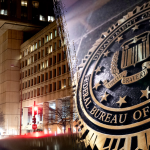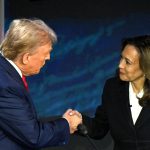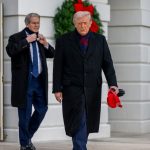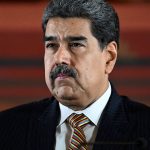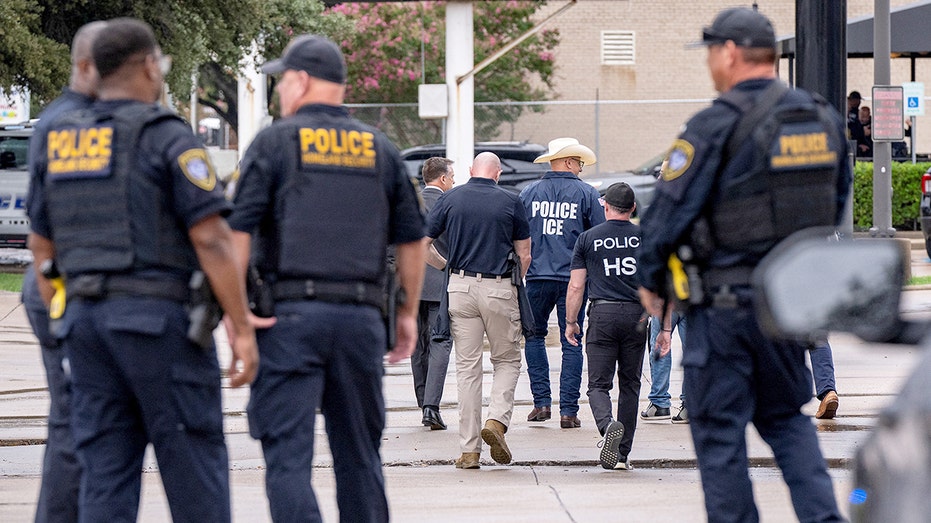The shooting of three ICE agents in Texas on Wednesday marks the latest and most brazen example of a surge in left-wing political violence.
From the dual attempted assassinations of President Donald Trump to the murder of Charlie Kirk, a chilling pattern is unmistakable: the left’s relentless demonization of conservatives is fueling real-world bloodshed.
DEADLY DALLAS ICE SHOOTING VICTIMS ARE DETAINEES, SOURCES SAY; SHOOTER DEAD
“This latest shooting against ICE shows what happens after decades of lack of consequences,” Lora Ries, director of the Border Security and Immigration Center at The Heritage Foundation, told Fox News Digital.
Ries argued that decades of weak immigration enforcement have emboldened activist groups, who are now lashing out against today’s tougher measures.
“We need to apply consequences early and often to crime, particularly violence, and immigration violations,” she added.
FBI Director Kash Patel said law enforcement officials recovered anti-ICE messaging at the scene. One of the unspent shell casings was engraved with the phrase “ANTI ICE,” underscoring investigators’ belief that the attack was politically motivated.
“These despicable, politically motivated attacks against law enforcement are not a one-off,” Patel wrote on a post in X. “We are only miles from Prarieland, Texas, where just two months ago, an individual ambushed a separate ICE facility targeting their officers,” he added.
And while the FBI vows accountability, Homeland Security officials point to the deeper problem: rhetoric that has already turned ICE agents into open targets.
WHO IS JOSHUA JAHN, SHOOTER IN DEADLY DALLAS ICE FACILITY ATTACK?
“We’ve been saying for months that the rhetoric around our law enforcement, particularly ICE, the dehumanization, the demonization has spun so far out of control and that someone is going to get hurt or someone’s going to get killed,” Department of Homeland Security Assistant Secretary Tricia McLaughlin told Fox News.
“This must stop,” McLaughlin added during her interview on “America’s Newsroom.”
Outside government, analysts agree the threat is serious — and more recently tied to the left’s rhetoric.
“There is a serious political problem in the United States,” Charles Fain Lehman, a fellow at the Manhattan Institute, told Fox News Digital.
He stressed that all political violence is bad, but noted that “the most recent string of incidents has been left-coded,” pointing to attacks on Teslas, ICE agents, and a string of politically motivated shootings and bombings.
Lehman said the murder of Charlie Kirk was the culmination of that trend — carried out by a suspect who had previously called the 31-year-old political activist a “fascist,” borrowing the same language often used by prominent Democrats to describe conservatives.
“At a certain point, if you make these arguments about people, somebody, somewhere, will take you seriously enough to use force because you are making an argument that seems to justify the use of force,” Lehman added.
CHARLIE KIRK’S ASSASSINATION LATEST CASE OF CONSERVATIVES BEING TARGETED FOR MURDER
The dynamic he describes has already played out in stark terms — most dramatically in the two recent assassination attempts on Trump.
Paul Sracic is an adjunct fellow at the Hudson Institute in Washington, D.C. and the former chair of the Department of Politics and International Relations at Youngstown State University. He said demonizing ICE doesn’t make the threats go away.
“The Department of Homeland Security, using Immigration and Customs Enforcement agents – that’s what ICE stands for – is charged with implementing the immigration laws passed by a democratically elected legislature,” Sracic said.
“To label the enforcement of democratically enacted laws fascist, and the agents responsible for enforcing those laws Nazis, is absurd. It’s also dangerous.”
Beyond the rhetoric, Sracic emphasized that lax immigration enforcement carries its own dangers, from terrorism to fentanyl:
“We really need our political leaders, media figures, and citizens to model a return to principled disagreement, where policy differences are debated without resorting to apocalyptic hyperbole.”

